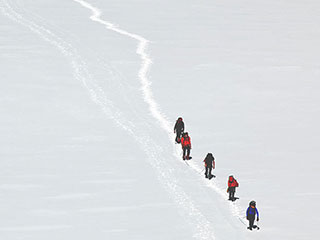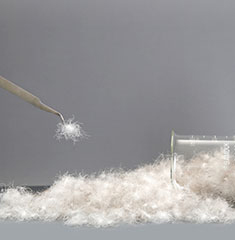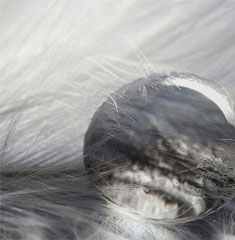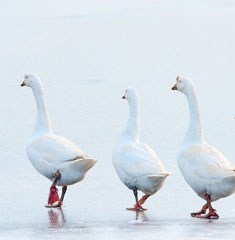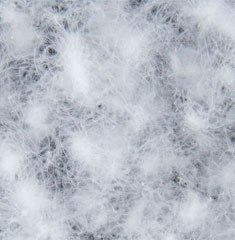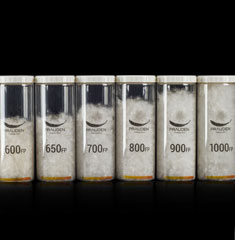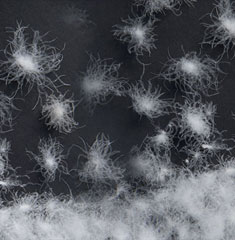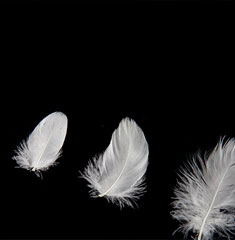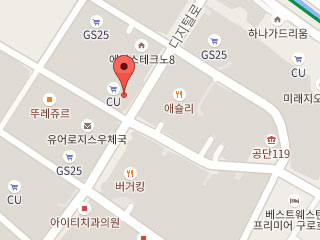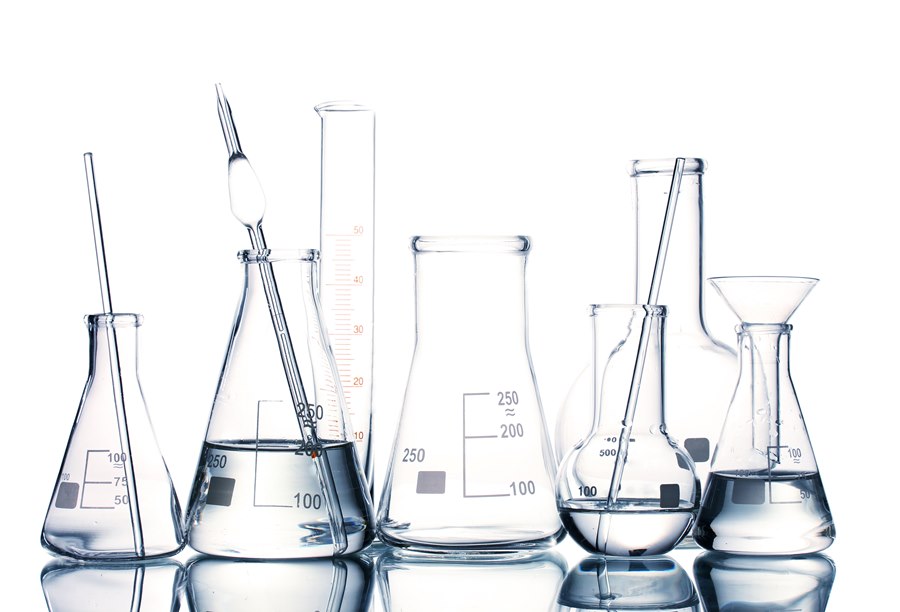
Down Quality Determining Factor 5. Oil & Fat
2019-03-27
PRAUDEN features articles that introduce important factors that determine the quality of the down so that consumers can make informed purchases. Following ‘Black Point’ of the last this issue, we are going to look at ‘Oil & Fat.’
See Down Quality Determining Factor 1. Content
See Down Quality Determining Factor 2. Fill Power
See Down Quality Determining Factor 3. Species Identification
See Down Quality Determining Factor 4. Black Point
What do oil & fat mean in down & feather?
Raw down and feature are composed of moisture (42.65%), nitrogen compounds (53.63%), oil & fat (1.69%) and ash (2.03%).
Why do oil & fat matter?
Oil & fat contents influence the quality of down to the greater extent in the following terms:
1. Heat-retainability: A down cluster has a core around which heat-retaining hairy feathers branch around to a form that resembles ‘dandelion seeds.’
2. Water & Vapor Permeability: Down and feather with high oil & fat content are permeable and moisture-proof for lightness, easily contracting and expanding themselves.
3. Resilience: Feathers of a down cluster stay separated from each other for resilience, helping retain heat and improve textural flexibility.
4. Bulkiness: A down cluster gets bulky with hairy feathers branching around, helping improve lightness and resilience.
▶ Check out all down and feather features here.
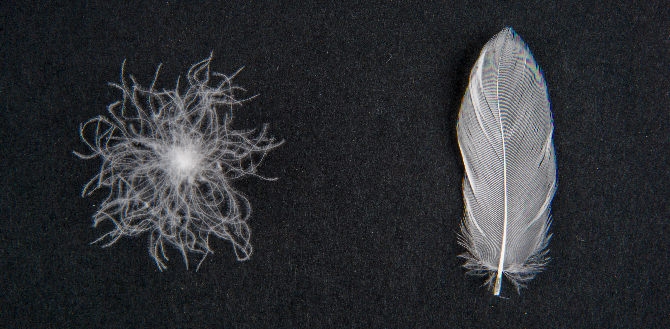
<Down (L) and Feather (R)>
The afore-described terms apply only to down, not feather. To have all such terms and work as it should, down must have balanced oil and fat content that help retain down cluster moist, soft and resilient in cold atmosphere. As much as oil & fat do in down, retention of oil & fat matters very much in processing of down.
Want to retain oil & fat while processing? Wash properly.
Washing matters to the greatest extent in retention of oil & fat while processing down. Use of detergent with proper pH for washing followed by dehydration, drying and cooling for adequate amount of time are essential to retain oil & fat to the maximum, which is what PRAUDEN is good at as it has managed delicate down washing process for over 30 years in-house.

| Washing | Remove oil and fat and impurities from down & feather and disinfect them |
| Dehydration | Dehydrating down & feather that became wet during washing |
| Drying | Drying down & feather thoroughly using high-pressure steam and removing residual bacteria |
| Cooling | Cooling down & feather at room temperature and removing dust and impurities again |
| Sorting | Sorting down and feathers and removing dust and impurities using the air sorting technique |
| Mixing | Mixing down and feathers at a ratio required by the customer |
| Special Process | Additional processes in consideration of customer needs |
<How to wash down properly? ▶Watch>
PRAUDEN washes eco-friendly and safe.
PRAUDEN is a bluesign®-certified down processor – became so for the first time as a Korean down and feather processor – in that it uses eco-friendly, surfactant (APEO)-free detergents and re-uses Indus trial waste water to the maximal extent and processes the final waste water prior to discharge. ▶Find out more

<bluesign® Compliance Criteria for Down and Feather Processor>
Imbalances in oil & fat contents result in:
1. When overbalanced: Oxidization by excessive moisture causes down to go bad and stinky.
2. When underbalanced: Down breaks easily and features poor texture – goes dysfunctional.
Keep in mind planning final products:
If filled into think-coated cloth, properly processed down may go stinky when washed home – thick-coated textiles are not air-permeable.
When down-filled cloth is dry-cleaned, down may lose its oil & fat content – this may affect down performance.
By Oh Joon-jae, R&D Part, PRAUDEN





